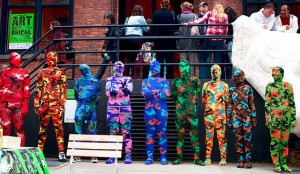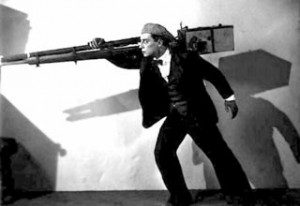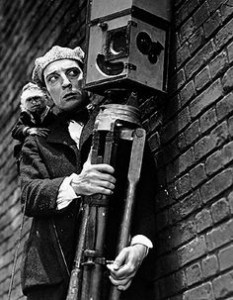I’ve mostly been at the writing/producing/commissioning end of the documentary-making business, (though I did start out as a photographer). Last week I did some real actual filming for the doc I’ve written called YARN. It was in Barcelona at the SWAB art fair. Helgi Felixsson is the director (and has also shot a lot of it) Iga Mikler is the DoP, but neither could make this particular event with one of our characters. So I said I’d go. How hard could it be?
After my few hours filming, I’ve got a new respect for what doc filmmakers (I mean anyone who holds a camera). I rented a Canon 5D MkII. Hardly an enormous camera, but after a few hours you can feel the weight. I also don’t know how anybody does manual focus with that camera’s LCD screen – I was sometimes setting the focus on the lens barrel according to the distance, as I just couldn’t tell from the screen what was sharp and what was not. Or giving up and going autofocus. I know there are some tips and settings I could have used – but I didn’t know about them, and only had an hour after getting the camera before starting filming.
Filming movement, like Olek‘s crochet-clad performers – was a real challenge. You had to be aware of what people were doing, what they were going to do next, be looking behind you to see what else 
was going on, constantly thinking about how to make a conversation into a 3 shot sequence. And worry about sound. Which I failed totally at. Plus you have to keep the shot steady, hoiking the camera on and off the monopod. Oh, and did I mention finding unusual creative shots with movement and interesting composition? Then when you add data management, (knowing the right camera settings, having the right cards, downloading it all correctly) it all feels too much for one person. Yet that is the reality of documentary filmmaking.
I know we could have hired a camera operator instead of just the kit, But a) we didn’t have the money; b) I knew Olek and what the other material looked like; and c) I fancy myself as a photographer and wanted to give it a go.
Re-reading Viktor Kossakovsky’s rules for documentary filmmaking, I realise how little attention I used to pay to the photographic nature of the work. With DSLRs it’s much more evident that the filmmaker’s role is to find images that capture a moment, rather than just record situations. As using a DSLR makes you feel you’re capturing a still image, it also makes you focus on what’s on the screen.
A lot of factual programmes can look very basic visually – not everybody is trying for a ‘photographic’ look. The ‘interviews + archive material’ formula to tell stories in the past tense is a formula for so much television. I’m beginning to understand why – it’s more straightforward to do, people sit in a chair and talk, and interviews can be planned in advance. The craft of filmmaking – whether that’s a short TV report or a long feature, I’m not making a TV-film distinction – is taking a situation and making a sequence out of it – not just one image, but several which together create a mood, an emotion in the viewer.
But I think of all the researchers and assistant producers being sent out with cameras with next-to-no training, particularly in the UK, generally on their own as part of a larger team to get material for formatted factual series. As they’re having to deal with the actual situation they’re filming, the craft of what they’re doing understandably gets lost. And their shots are then edited by an edit producer with no reference to them, or the time to talk to them about what they’ve shot and why. Except to moan about how they’ve forgotten GVs, close ups, and so on.
I guess I’ll get better with practise, and it’s about time I bought my own documentary-ready DSLR. If anybody has tips and recommendations about what I should buy, I’d love to hear them.


